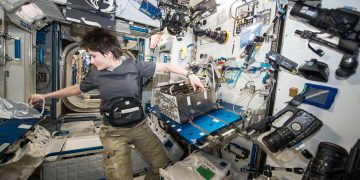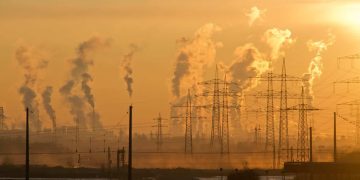Introduction
Air pollution has long been a major concern in urban areas, contributing to a range of health issues, from respiratory diseases to cardiovascular problems. According to the World Health Organization (WHO), air pollution is responsible for millions of premature deaths each year globally. As cities grow and industrial activities expand, the challenge of reducing air pollution becomes more urgent. In response to this issue, green technologies have emerged as a promising solution to mitigate the environmental impacts of human activity and improve public health.
Green technology, often referred to as “clean technology,” includes innovations that reduce environmental harm while promoting sustainability. These technologies span a wide range of fields, from renewable energy sources to air purification systems. But the question remains: can green technology truly address the issue of air pollution and lead to a healthier world?
This article will explore how various green technologies are being utilized to reduce air pollution and their potential impact on public health. We will examine the role of renewable energy, electric vehicles, smart urban design, and air purification systems, evaluating the effectiveness of these innovations in combating air pollution and improving overall well-being.
1. The Impact of Air Pollution on Health
A. Health Effects of Air Pollution
Air pollution, which includes both outdoor and indoor pollution, is a leading cause of several chronic and acute health problems:
- Respiratory Issues: Exposure to air pollutants like particulate matter (PM2.5), nitrogen dioxide (NO2), and sulfur dioxide (SO2) can lead to conditions such as asthma, bronchitis, and chronic obstructive pulmonary disease (COPD).
- Cardiovascular Diseases: Long-term exposure to air pollution increases the risk of heart attacks, strokes, and high blood pressure.
- Premature Deaths: According to WHO, air pollution is responsible for approximately 7 million premature deaths every year, with the majority of those deaths occurring in low- and middle-income countries.
- Children’s Health: Children are particularly vulnerable to air pollution due to their developing respiratory systems. Exposure to polluted air can lead to developmental delays, asthma, and even reduced cognitive performance.
B. Economic Costs of Air Pollution
The economic burden of air pollution is significant. It includes healthcare costs related to treating pollution-induced diseases, lost productivity due to illness, and environmental degradation. According to a report by the World Bank, air pollution is responsible for billions of dollars in health-related costs and economic losses annually.
2. What is Green Technology?
A. Definition and Scope
Green technology refers to innovations designed to reduce the environmental impact of human activity while promoting sustainability. This includes technologies that:
- Reduce Carbon Emissions: Technologies that help mitigate climate change by reducing greenhouse gas emissions, such as solar and wind power.
- Promote Energy Efficiency: Systems and devices that use less energy to perform the same tasks, reducing the overall demand for energy and lowering pollution.
- Pollution Control: Technologies aimed at reducing air, water, and soil pollution, such as clean air filters, waste management systems, and carbon capture technology.
Green technology spans multiple industries, from energy production to transportation, construction, and waste management. These innovations have the potential to not only reduce pollution but also create a cleaner, healthier environment for future generations.
3. The Role of Renewable Energy in Reducing Air Pollution
A. Solar Energy
Solar energy is one of the most widely recognized green technologies that can help reduce air pollution. By harnessing the power of the sun, solar panels generate electricity without releasing harmful emissions into the atmosphere. The shift from fossil fuel-based electricity generation to solar power can significantly reduce the pollutants associated with energy production.
- Reduction in Greenhouse Gases: Solar energy production produces no direct greenhouse gas emissions, making it a clean and sustainable alternative to coal, oil, and natural gas.
- Air Quality Improvement: In regions where coal or oil is used to generate electricity, transitioning to solar energy can drastically reduce pollutants like sulfur dioxide (SO2) and nitrogen oxides (NOx), which are major contributors to smog and respiratory problems.
B. Wind Energy
Like solar energy, wind power is another renewable source that can help reduce air pollution. Wind turbines generate electricity without emitting any air pollutants, making wind energy an important part of the clean energy transition.
- Reduced Dependence on Fossil Fuels: Wind energy displaces the need for fossil fuel-based electricity generation, which significantly reduces emissions of harmful pollutants.
- Cleaner Cities: By integrating wind energy into the energy grid, cities can reduce the levels of airborne pollutants, leading to improved air quality and public health.
C. Hydro and Geothermal Energy
Hydropower and geothermal energy are also valuable renewable sources that can contribute to cleaner air. Both generate electricity with minimal air pollution and can be integrated into the global energy system to reduce reliance on coal and gas.
- Hydropower: Large-scale hydroelectric dams provide consistent, clean energy and have the potential to significantly reduce the use of polluting coal plants.
- Geothermal: Geothermal energy uses heat from the Earth’s core to generate electricity and heat buildings, offering a sustainable and low-emission energy source.

4. The Role of Electric Vehicles (EVs) in Reducing Air Pollution
A. Reduction of Emissions
The transportation sector is one of the largest contributors to air pollution, particularly in urban areas. Traditional gasoline and diesel vehicles emit significant amounts of pollutants, including carbon monoxide (CO), particulate matter, and nitrogen oxides. Electric vehicles (EVs) offer a cleaner alternative by producing zero tailpipe emissions.
- Electric Vehicle Adoption: As more consumers and businesses adopt EVs, the reduction in air pollution from transportation could be substantial. Cities and countries that are transitioning their public and private vehicle fleets to electric vehicles are already seeing significant improvements in air quality.
- Urban Air Quality: EVs can particularly improve air quality in urban centers, where the concentration of vehicle emissions is highest.
B. Benefits of EVs for Public Health
Electric vehicles not only reduce emissions but also promote better public health by improving air quality and reducing the health risks associated with air pollution.
- Cleaner Air: By eliminating exhaust emissions, EVs help reduce smog, respiratory diseases, and cardiovascular problems linked to car pollution.
- Noise Reduction: EVs are generally quieter than traditional vehicles, which can reduce noise pollution in urban areas and improve the quality of life for residents.
5. Green Urban Design and Sustainable Architecture
A. Green Buildings
Sustainable architecture and green building design are crucial in addressing air pollution and improving urban air quality. Green buildings incorporate energy-efficient technologies and environmentally friendly materials that reduce the environmental impact of construction and operation.
- Energy-Efficient HVAC Systems: Advanced heating, ventilation, and air conditioning (HVAC) systems in green buildings reduce energy consumption and improve indoor air quality by minimizing pollutants and allergens.
- Green Roofs and Walls: These can absorb pollutants, reduce heat islands, and help improve urban air quality by trapping particulate matter.
- Urban Planning: Cities that prioritize green space, such as parks and tree-lined streets, can help combat air pollution and create healthier living environments.
B. Smart Cities and Air Quality Monitoring
Smart cities use technology to optimize resource usage and improve the quality of life for their residents. One of the key components of a smart city is the use of sensors and data analytics to monitor air quality and make real-time adjustments to reduce pollution levels.
- Real-Time Monitoring: Smart air quality monitoring systems provide valuable data that can inform decision-making and allow cities to respond quickly to air pollution spikes.
- Green Infrastructure: Smart urban design often incorporates green infrastructure, such as permeable surfaces and sustainable transportation options, to mitigate pollution and improve the urban environment.
6. Air Purification Technologies
A. Air Filtration Systems
In addition to reducing the sources of pollution, air purification technologies play a vital role in cleaning the air we breathe. Many homes, offices, and public spaces now use air purifiers equipped with HEPA (high-efficiency particulate air) filters to remove fine particles and allergens from indoor air.
- Portable Air Purifiers: These devices can be used in homes, schools, and hospitals to remove particulate matter, volatile organic compounds (VOCs), and other air pollutants.
- Air Purification in Urban Areas: Larger-scale air filtration systems are being implemented in some urban areas to combat outdoor pollution and protect the health of residents.
B. Green Building Ventilation Systems
Modern green buildings incorporate advanced ventilation systems that ensure the continuous flow of clean air and reduce the risk of indoor pollution. These systems can integrate with outdoor air purification technologies to maintain a healthy indoor environment.
7. Challenges and Limitations
While green technologies hold significant promise for reducing air pollution and improving public health, there are challenges that need to be addressed:
- Initial Costs: The upfront cost of renewable energy systems, electric vehicles, and green building technologies can be high. While long-term savings and environmental benefits are clear, financial barriers may hinder widespread adoption.
- Infrastructure Limitations: Transitioning to green technologies requires significant investment in infrastructure, such as charging stations for EVs or the integration of renewable energy into national grids.
- Policy and Regulation: Governments need to implement supportive policies, incentives, and regulations to encourage the adoption of green technologies. Without strong leadership and commitment, progress may be slow.
Conclusion
Green technologies hold tremendous potential to reduce air pollution and improve public health. Renewable energy, electric vehicles, air purification systems, and green urban design all play critical roles in addressing the growing challenges of air pollution and environmental degradation. While there are challenges to overcome, such as initial costs and infrastructure development, the long-term benefits—reduced healthcare costs, improved quality of life, and a cleaner environment—make green technology a worthwhile investment. As we continue to innovate and expand the use of clean technologies, the future holds the promise of healthier cities and a more sustainable planet for generations to come.


















































Discussion about this post